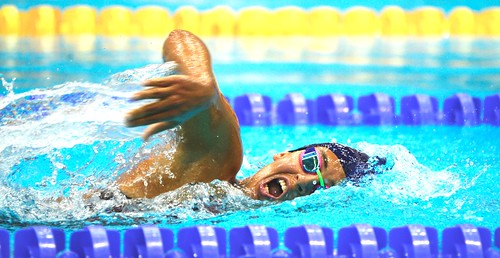n total, 150 mice were tested per combination. The maze was carefully washed after each test. Mice were placed separately in the starting arm at the end of the stem and then allowed to move freely for 3 min. The movements of the mice were video recorded and analyzed with a video tracking system. Volunteer experiments and mRNA isolation from human leukocyte This research received approval of the Human Subjects Committee at the N. N. Blokhin National Cancer Research Center, Moscow, Russia. All participants signed Institutional Review Board-approved consent forms. The study included 15 unrelated healthy volunteers aged 2060 yr. A 5-ml blood sample was PubMed ID:http://www.ncbi.nlm.nih.gov/pubmed/22189963 taken before and after the consumption of Chinese cabbage or turkey meat. Volunteers fasted before sampling. Blood was collected in evacuated tubes containing K3EDTA as an anticoagulant. Four volumes of RBC lysisbuffer were added to one volume of the whole blood. The solution was incubated 10 min, and leukocytes were sedimented by centrifugation. Subsequently, the pellet was washed two times with 2 ml 16PBS and resuspended in 100 ml 16PBS. Total RNA was isolated from leukocytes using TriReagent according to the manufacturer’s protocol. For the methanol measurements, blood samples without anticoagulant were incubated at 4uC for 2 h for cell sedimentation, and an equal volume of 10% TCA was then added to the plasma. The mixture was incubated for 20 min on ice and then centrifuged for 10 min at 16 000 g. Finally, the supernatant was analyzed for methanol content by gas chromatography. Pectin administration into mice The structure of this study and the animal experimental procedures were approved by the ethical committee of the N. N. Blokhin National Cancer Research Center, Moscow, Russia. The mice were fed a cereal-based diet, which consisted of 12.7% protein,  5.6% fat and 54.1% carbohydrate with a total fiber content of 3.7%. The diet was supplemented with a vitaminmineral premix according to the recommendation of the American Institute of Nutrition. The mice were randomly divided into five groups of ten mice. Each mouse in the treatment groups directly received 20 mg pectin, pectin, 200 ml 0.5% glucose solution or 200 methanol into the stomach by gavage. After 10, 30, 60 or 120 min, blood samples were isolated from the tail vein of the mice. Samples were incubated at 4uC for 2 h for cell sedimentation then an equal volume of 10% trichloroacetic acid was added to plasma. The mixture was incubated for 20 min on ice and then centrifuged for 10 min at 16 000 g. Finally, the supernatant was analyzed for methanol content by gas chromatography. Methanol measurements by gas chromatography Methanol was measured in the headspace of intact or wounded leaves in hermetically sealed jars or in glass flow chambers using a water sample as a trap as described earlier. The water-drop set-up was achieved using hermetically sealed plastic jars with a drop of water. Methanol content was determined by gas chromatography on a capillary FFAP 6-Methoxy-2-benzoxazolinone site column in a Kristall 2000 gas chromatograph. Liquid samples were measured under the following operating conditions: carrier gas, nitrogen; nitrogen flow, 30 ml/min; air flow, 400 ml/min; hydrogen flow, 40 ml/min; injected volume, 1 ml; injector temperature, 160uC; column temperature, 75uC increased at 15uC/min to 150uC; retention time, 6.5 min; and flame ionization detector temperature, 240uC. Two-choice experiments in mice using a Y-maze The experimental set-up for the two-choic
5.6% fat and 54.1% carbohydrate with a total fiber content of 3.7%. The diet was supplemented with a vitaminmineral premix according to the recommendation of the American Institute of Nutrition. The mice were randomly divided into five groups of ten mice. Each mouse in the treatment groups directly received 20 mg pectin, pectin, 200 ml 0.5% glucose solution or 200 methanol into the stomach by gavage. After 10, 30, 60 or 120 min, blood samples were isolated from the tail vein of the mice. Samples were incubated at 4uC for 2 h for cell sedimentation then an equal volume of 10% trichloroacetic acid was added to plasma. The mixture was incubated for 20 min on ice and then centrifuged for 10 min at 16 000 g. Finally, the supernatant was analyzed for methanol content by gas chromatography. Methanol measurements by gas chromatography Methanol was measured in the headspace of intact or wounded leaves in hermetically sealed jars or in glass flow chambers using a water sample as a trap as described earlier. The water-drop set-up was achieved using hermetically sealed plastic jars with a drop of water. Methanol content was determined by gas chromatography on a capillary FFAP 6-Methoxy-2-benzoxazolinone site column in a Kristall 2000 gas chromatograph. Liquid samples were measured under the following operating conditions: carrier gas, nitrogen; nitrogen flow, 30 ml/min; air flow, 400 ml/min; hydrogen flow, 40 ml/min; injected volume, 1 ml; injector temperature, 160uC; column temperature, 75uC increased at 15uC/min to 150uC; retention time, 6.5 min; and flame ionization detector temperature, 240uC. Two-choice experiments in mice using a Y-maze The experimental set-up for the two-choic
